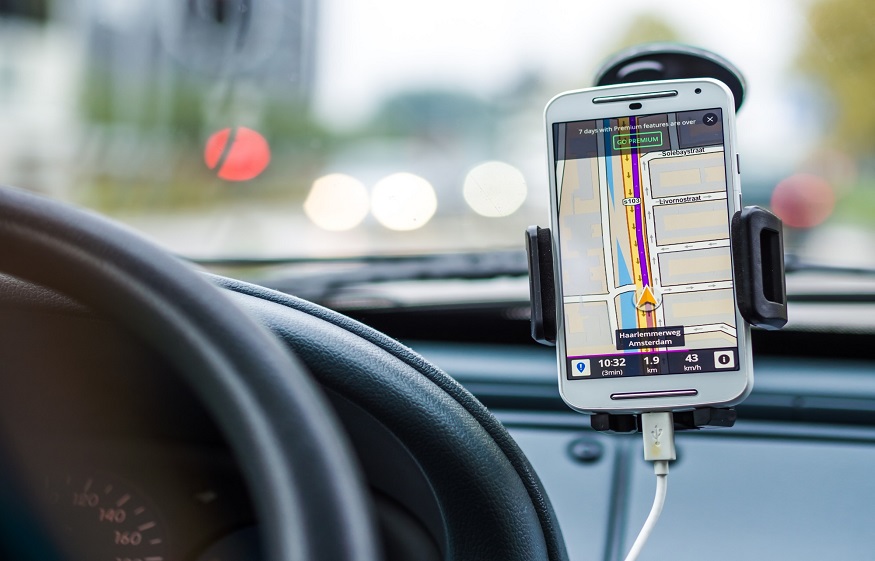If you are feeling lost, then perhaps it is time to find a new direction. In fact, getting to your destination has never been easier. Some of the most advanced applications are now available on your smartphone, so you never have to jump on the wrong bus or turn down a blind alley again.
With so many transportation apps on the market, how are you meant to know which is the best one? Below, we give our top ten transportation apps for all your daily needs.
1. Citymapper
Citymapper is a great starting transit app and has support for most modes of transport. It provides alerts and departure times for trains, subways, buses, taxis, and trains. It even has integration with Uber and Lyft.
The smartphone app covers a dozen cities in Europe and the US, with a few in Australia, Asia, and Canada. Users can vote for other cities they want it to cover next, as they expand their coverage.
2. Transit
Transit is one of the larger, more comprehensive of the apps. Once it has access to your location, it will pick up all public transport options around you. Trains, buses, and underground systems are all color-coded.
All transport options have times and numbers, with real-time tracking and departure. It has an inbuilt trip planner, and you can also check schedules in advance. If you turn on notifications, you can also be alerted to schedule changes or delays.
3. Google Maps Transportation Apps
Google Maps can sometimes get overlooked for other, more specialized transit apps. However, at its core, it is still a great tool to help you get around. One of the main differences to a transit app is that it asks for a location first, before planning your route and giving you options.
In fact, before you choose the public transport options Google Maps also has driving times and directions for travel on foot. It will color-code your route, giving you departures times and numbers for transport. It also gives you a number of options, including routes that may be slower but easier to take.
The bottom of the screen will give you schedule alerts, even if the timetable has been modified. You can also see which company is running the service, making it easier to locate your ride.
4. Lyft
Lyft is one of the biggest and fastest-growing transit apps. It is free to download and is a direct competitor with Uber. Unfortunately, it is only currently available in North America.
It is a very viable alternative to Uber with some great extra features. One of these is the ability to split payments between you and other riders. So if you and your friends take a cab, you can all pay your own part from your own app.
Despite only being in the US, it does have huge coverage. They have stated their intent to roll out globally.
5. HERE Wego
If you like to venture out and about, moving outside of city limits, then it pays to have an offline transit app. One of the best is HERE Wego, which allows you to download maps from over 100 countries to your device. Each of them has a voice and walk assistance that you can use without a phone signal.
Public transport information is contained within the app for 1300 cities. If you are really adventurous, it even gives advice on the terrain for anyone cycling or hiking.
6. Moovit
Moovit has all the features you would expect from a public transport app. All of it is bundled in a very clear, simple to use application that is free to download.
It has a trip planner feature and access to full schedules. These can be accessed from anywhere, not just for places in your immediate vicinity. Once it has pulled up all of the transport options in your local area, it can also tell you how many stops until you should alight.
Delays and traffic jams are indicated in real-time. One neat feature is that it also incorporates any bike rental facilities in your local city. You can see docking stations and the availability of each one.
7. ETA
ETA is a transit app that is slightly different in its aim, look, and appearance from other transit apps on the market. While it does provide driving, walking, and public transport information, its main purpose is to provide you with estimated arrival times when you are on the move.
You can save your favorite destinations in the app for quick retrieval. All you have to do is click on the destination, and it will give you multiple driving and transport ETA times. While the directions are not given in the app, it will then bring them up using your navigation application of choice.
8. Uber
- No list of transit apps would be complete without Uber. While it has courted a lot of controversies and been banned from many places, it is still one of the biggest and best taxi applications you can have. In fact, it still covers over 800 cities around the world.
If you have not used Uber, you ping your location to drivers in your area. You pay via the app, and you are picked up and dropped off at your destination. You can then rate the driver.
9. Sygic GPS
Sygic is a satellite navigation app that offers 3D maps to users working offline. It is very popular due to its safety features and intuitive UI, which gathers its data from TomTom. Designed for drivers as opposed to those on public transport, it has lane assistance and gives information on speed limits.
If you are not driving, then Sygic is also as useful. It has directions for scenic walks and details on hundreds of tourist attractions loaded on to it.
10. Whiz
Whiz is specifically designed for public transport, with live train and bus times its main focus. You can plan trips up to a week in advance and select from a number of routes. This can be shared with family and friends, making it a great app for anyone who has teenage children who have just started to venture out into the world alone.
Find Your Way
With just a few of these transportation apps on your device, we hope you never get lost again! If you do, then let us help with our handy blog articles.
We have everything to help you on your journey, from discussions on the best apps to reviews of brand new automotive products. Visit us today for all your transportation news!




